Filter by

A "Labyrinth of Linkages" in Tolstoy's "Anna Karenina"
The renowned Russian writer Leo Tolstoy created a realistic masterpiece in Anna Karenina (1878). In the same work, moreover, he utilized allegory and symbol to an extent and at a level of sophistication unknown in his other works. In Browning’s study, the author identifies and analyzes previously unnoticed or only briefly mentioned “linkages and keystones” found in two highly developed cl…
- Edition
- -
- ISBN/ISSN
- 9781936235476;9781618116796
- Collation
- -
- Series Title
- -
- Call Number
- -

“Tsar and God”: and Other Essays in Russian Cultural Semiotics
Featuring a number of distinguished essays by internationally known Russian cultural historians Boris Uspenskij and Victor Zhivov, this collection encompasses various ground-breaking works appearing in English for the first time. Focusing on several of the most interesting and problematic aspects of Russia’s cultural development, these essays examine the survival and reconceptualization of Ru…
- Edition
- -
- ISBN/ISSN
- 9781618116703
- Collation
- -
- Series Title
- -
- Call Number
- -
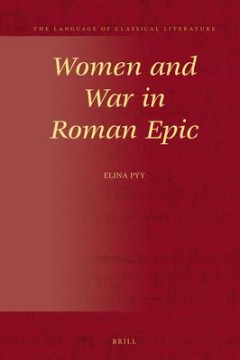
Women and War in Roman Epic
In Women and War in Roman Epic, Elina Pyy discusses the narrative and ideological functions of gender in the works of Virgil, Lucan, Statius, Silius Italicus and Valerius Flaccus. By examining the themes of violence, death, guilt, grief, and anger in their epics, she offers an account of the intertextual tradition of the genre and its socio-political background. Through a combination of classic…
- Edition
- -
- ISBN/ISSN
- 9789004443457
- Collation
- 342 hlm; ill., lamp.,
- Series Title
- The Language of Classical Literature, Volume: 33
- Call Number
- -

Vernacular Books and Their Readers in the Early Age of Print (c. 1450–1600)
'The Open Access publishing costs of this volume were covered by the Dutch Research Council (NWO), Veni-project “Leaving a Lasting Impression. The Impact of Incunabula on Late Medieval Spirituality, Religious Practice and Visual Culture in the Low Countries” (grant number 275-30-036).' This volume explores various approaches to study vernacular books and reading practices across Europe in …
- Edition
- -
- ISBN/ISSN
- 9789004520158
- Collation
- 432 hlm; ill., lamp.,
- Series Title
- Intersections, Volume: 85
- Call Number
- -
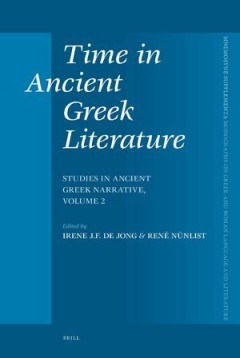
Time in Ancient Greek Literature = Studies in Ancient Greek Narrative, Volume 2
This is the second volume in a series of volumes which together will provide an entirely new history of ancient Greek (narrative) literature. Its organization is formal rather than biographical. It traces the history of central narrative devices, such as the narrator and his narratees,time, focalization, characterization, and space. It offers not only analyses of the handling of such a device b…
- Edition
- -
- ISBN/ISSN
- '9789047422938
- Collation
- 556 hlm; ill., lamp.,
- Series Title
- Mnemosyne, Supplements, Volume: 291
- Call Number
- -
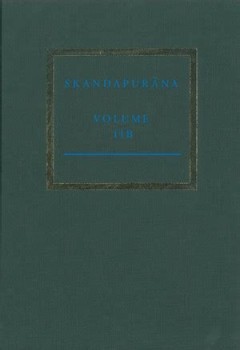
The Skandapurāṇa Volume IIb = Adhyāyas 31-52. The Vāhana and Naraka Cycles
Skandapurāṇa IIb presents a critical edition of Adhyāyas 31-52 from the Skandapurāṇa, with an introduction and English synopsis. The text edited in this volume includes central myths of early Śaivism, such as the destruction of Dakṣa's sacrifice and Śiva acquiring the bull for his vehicle. Also included is an extensive description of the thirteen hells (Naraka).
- Edition
- -
- ISBN/ISSN
- 9789004277137
- Collation
- 384 hlm; ill., lamp.,
- Series Title
- -
- Call Number
- -

The School of Salamanca: A Case of Global Knowledge Production
Over the past few decades, a growing number of studies have highlighted the importance of the ‘School of Salamanca’ for the emergence of colonial normative regimes and the formation of a language of normativity on a global scale. According to this influential account, American and Asian actors usually appear as passive recipients of normative knowledge produced in Europe. This book proposes…
- Edition
- -
- ISBN/ISSN
- 9789004516441
- Collation
- 296 hlm; ill., lamp.,
- Series Title
- Thomas Duve, José Luis Egío, and Christiane Birr
- Call Number
- -
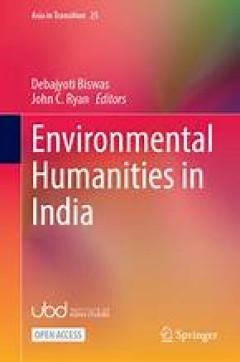
Environmental Humanities in India
This open access book offers an introduction to the field of the environmental humanities in India. The environmental humanities, often referred to as ‘EH’, are a multifaceted, relatively new, and swiftly evolving field of scholarship that integrates the theories and approaches of various disciplines - from anthropology, art, communications, cultural studies, philosophy and ecology to histo…
- Edition
- 1
- ISBN/ISSN
- 978-981-97-3933-2
- Collation
- X, 234
- Series Title
- Asia in Transition
- Call Number
- -

The Poetics of Anti-Colonialism in the Arabic Qaṣīdah
Representing the most sustained investigation of the aesthetics of Anti-Colonialism in modern Arabic poetry, this book chronicles the evolution of a distinct poetics that sought to maintain the integrity of the qaṣīdah without circumventing its historical moment. It painstakingly analyses a selection of odes by four leading twentieth-century poets, Aḥmad Shawqī, Maʿrūf al-Ruṣāfī, Ba…
- Edition
- -
- ISBN/ISSN
- 9789047404408
- Collation
- 304 hlm; ill., lamp.,
- Series Title
- Brill Studies in Middle Eastern Literatures, Volume: 29
- Call Number
- -
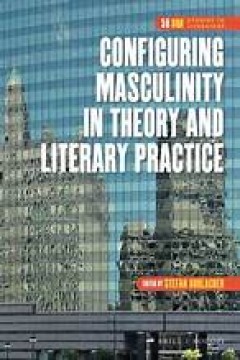
Configuring Masculinity in Theory and Literary Practice
Configuring Masculinity in Theory and Literary Practice combines a critical survey of the most current developments in the emergent field of Masculinity Studies with both a historical overview of how masculinity has been constructed within British Literature from the Middle Ages to the present and a special focus on developments in the 20th and 21st centuries. The volume combines seminal artic…
- Edition
- -
- ISBN/ISSN
- 978-90-04-29900-9
- Collation
- oer.unej.ac.id
- Series Title
- DQR Studies in Literature Online, Volume: 58
- Call Number
- -
 Computer Science, Information & General Works
Computer Science, Information & General Works  Philosophy & Psychology
Philosophy & Psychology  Religion
Religion  Social Sciences
Social Sciences  Language
Language  Pure Science
Pure Science  Applied Sciences
Applied Sciences  Art & Recreation
Art & Recreation  Literature
Literature  History & Geography
History & Geography